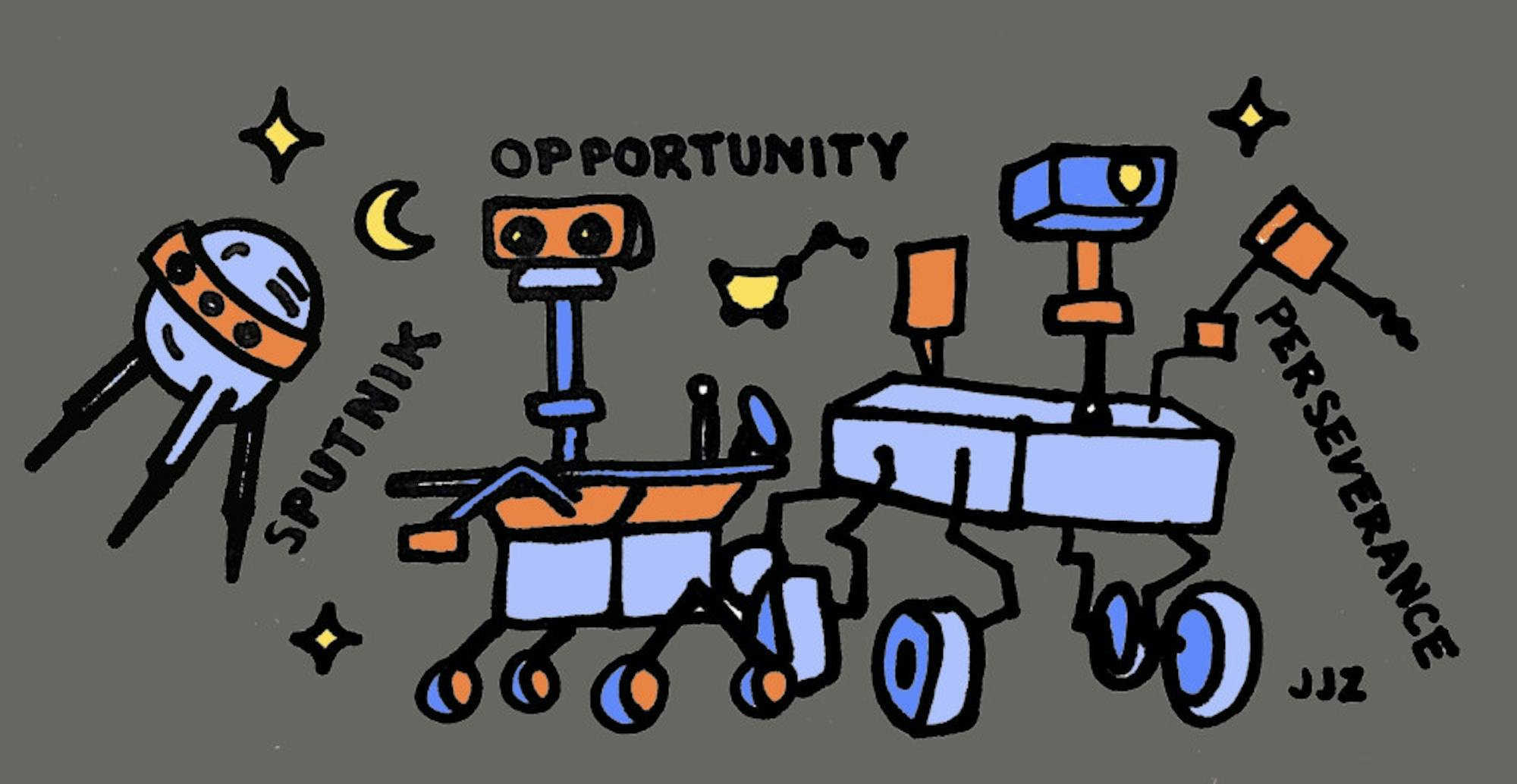A great deal has changed since 1957, when the Soviet Union launched the satellite Sputnik I and began the Space Age. One thing that persists, however, is our continued fascination with space and the science that brings us there.
On Feb. 18, NASA successfully landed its most recent Mars rover, Perseverance, on the surface of the red planet to search for signs of ancient life. The rover is about the size of a car and carries technology that could pave the way for future robotic and human missions.The two-hour livestreamed video of Perseverance’s journey through the Mars atmosphere to the planet’s surface has been viewed over 21 million times.
It is easy to understand the widespread allure that has surrounded manned missions to the space station and to the moon, but one might think that a robot picking up rocks would be different. However, the storied legacies of Perseverance’s predecessors proves this is clearly not the case.
Opportunity, nicknamed "Oppy," reached Mars in 2004 for a 90-day mission along with its twin rover, Spirit.Among other historic accomplishments, the mission found conclusive evidence that there was once water on Mars, suggesting that the planet could have supported microbial life.Far exceeding its expectations, Oppy was still sending messages back to Earth as recently as June 2018,when a historic dust storm is assumed to have damaged the rover’s communication instruments beyond repair.In the eight months that followed, the team of engineers and scientists who communicated with Oppy sent songs to Mars,hoping that one of them would wake the rover up.Before declaring the mission over in February 2019, they played one last song for their robotic friend, alone and silent on a barren planet:“I’ll Be Seeing You” by Billie Holiday.
Not long after rovers Opportunity and Spirit cleared a new path in space exploration, Curiosity was launched in 2011.On the one-year anniversary of Curiosity’s landing, NASA scientists programmed the instruments onboard to hum the tune of “Happy Birthday” so that the rover could celebrate with the rest of us.
And just a couple of months ago, in the final stages of Perseverance’s difficult journey, engineers listened for signals from their newest robot. Specifically, they were trying to hear what they nicknamed the rover’s “heartbeat tone,” letting them know that everything was going according to plan from millions of miles away.
What can we learn from all of this? Aside from the impressive discoveries made by these robots as they examine extraterrestrial rocks, what is also significant is the sheer amount of dedication shown by the creators of these robots — some of the greatest scientific minds in the country who want to explore places that we, as humans, cannot go ourselves.
They give these machines names that encompass qualities we admire and strive for. They send them music and teach them to sing (as much as the buzzing of machinery at different pitches can be considered singing). And when these scientists want to know that everything is OK, they give their robot a heartbeat. While this is a simplification of the vast and complex scientific processes — and years of collective research and labor — that go into a successful Mars mission, there is something hopeful and innately human about creating a rover that we can all root for as it rumbles around on another planet some 140 million miles away.
That is not to say that space exploration is without its flaws. Space exploration and many careers in STEM have historically excluded or been made inaccessible to many, including women and people of color. This industry, like many others, still must make strides to become more inclusive. Furthermore, the future of publicly funded space travel and research is not as certain as it once was, as private corporations begin to capitalize off the opportunities beyond our atmosphere.
Even so, the science of space is entirely an investment in our confidence in what humans can learn and accomplish with very limited precedent, and in our ability to use that knowledge for future endeavors. Space exploration underscores our limitless optimism, our willingness to assume a risk with the confidence that we will be better off just because we have learned something. This human spirit took us to the moon, and now it takes our robots even farther. We may not know what the future holds, but it will certainly be as exhilarating as every past victory. There are infinite possibilities and lots of work that still lies ahead, but if we have learned anything, it is that perseverance always pays off in the end.






